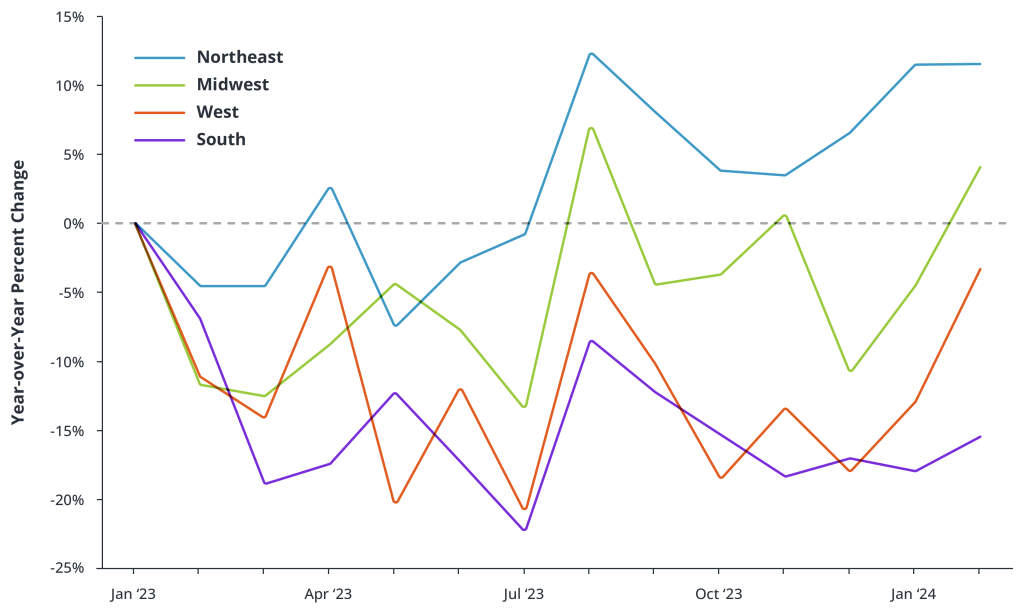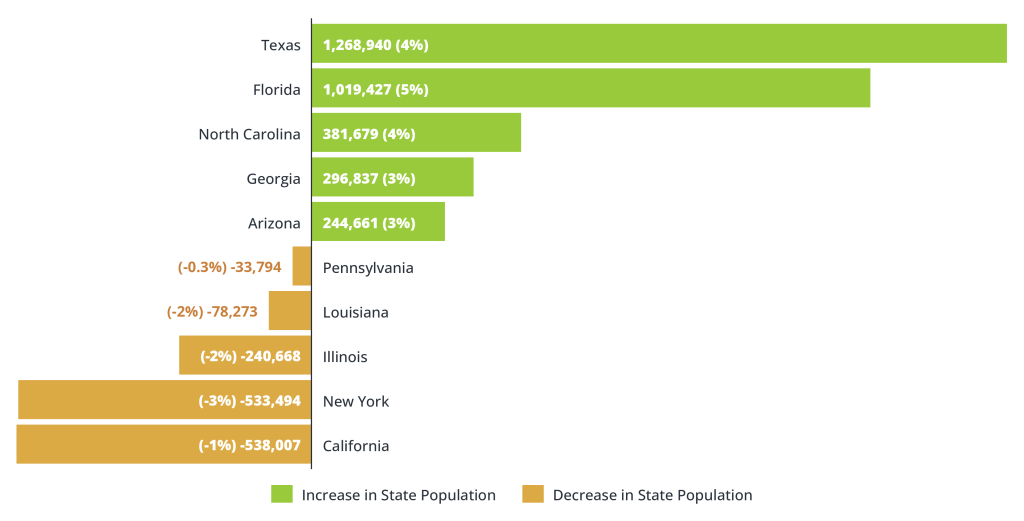Firms that correctly identify where opportunities abound are likely to stay one step ahead of their competition and do well in almost any economic environment.
Weekly Economic Outlook
04/09/2024
Under the Hood of the Latest JOLTS Report
Last Tuesday’s JOLTS report provided preliminary estimates for total job openings, hires, and separations in February. While it revealed minimal change in the month-to-month level of aggregate openings, hires, and separations, there were some significant variations by sector as well as geographic region which are critical to understanding the current labor supply and demand dynamics.
Sectors with the highest gains in month-to-month job openings included Finance and Insurance as well as State and Local Government. These sectors have exhibited significant immunity to job loss risk given their insensitivity to interest rates and significant education and skill requirements relative to other sectors. Conversely, sectors with the highest gains in month-to-month layoffs and discharges included Accommodation and Food Services as well as Arts, Entertainment, and Recreation. These sectors retain much more job loss risk because of their sensitivity to interest rates and lower education and skill requirements relative to other sectors. These opposing dynamics suggest labor demand is not softening evenly throughout the economy.
When assessing job openings by region using January 2023 as a baseline, job openings have steadily risen in the Northeast region, owing to its large share of the working-age population. However, the Midwest and West regions have begun to slowly catch up in terms of job openings, which could indicate more geographical balance as a result of flexible work arrangements and shifting labor pools stemming from the pandemic. These results underscore the importance of data like JOLTS for staffing companies, as firms that correctly identify where opportunities abound are likely to stay one step ahead of their competition and do well in nearly any economic environment.
Year-Over-Year Percent Change in Total Job Openings From January 2023 by Census Region

Weekly Staffing Research Outlook
04/09/2024
Knowing about local trends in population can help staffing companies stay abreast of supply and demand dynamics in their market and anticipate wage pressures that could be related to changes in housing prices.
Shifting Sands: The Population Trends Impacting Local Labor Markets
One important trend that has changed local labor markets in recent years is geographic changes in population, which affects available talent levels, demand for different industries, and cost of living factors that can lead to higher wage pressures within a market. While births, deaths, and international migration all impact an area’s population, the role of domestic migration—or people moving from one part of the U.S. to another—has increased in recent years.
Even before the pandemic, domestic migration trends were driven by Baby Boomers retiring to warmer climates and people seeking affordable housing in smaller markets. The Covid-19 pandemic amplified these trends, accelerating a shift from northern to southern regions and out of expensive metropolitan areas to more affordable markets. Postpandemic, these trends are moderating.
So which regions have gained in population over the last several years? From 2020 to 2023, the South region in the U.S. grew by 3.7 million residents, or 2.9%, according to the U.S. Census Bureau. The West grew 235K or 0.3%, while the Midwest (-60K, -0.1%) and Northeast (-447K, -0.8%) lost residents.
Knowledge of local population trends can help staffing companies stay abreast of supply and demand dynamics in their market and anticipate wage pressures that could be related to changes in housing prices. At the same time, companies should be aware of programs in their area intended to entice workers to move to their area, as this could sweeten the deal for prospective candidates. See how the population has changed in your state and in the states where your staffing company operates according to the U.S. Census Bureau.
Top Gains and Losses in Population by State



